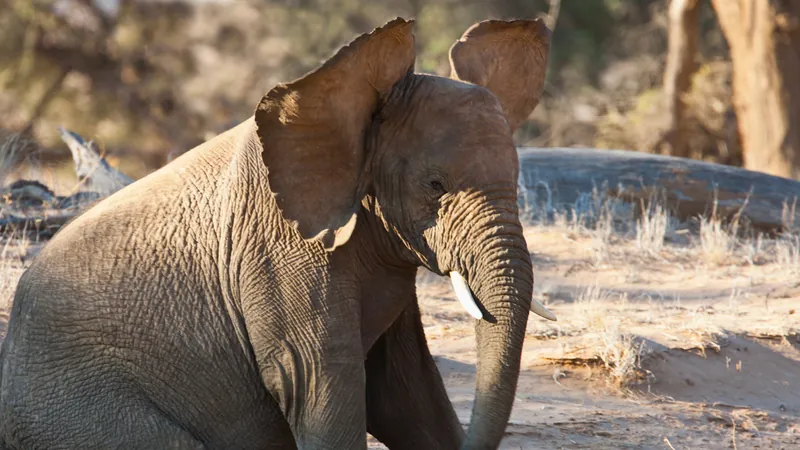
The Surprising Science Behind Elephant Ears: Why Size Matters!
2025-05-17
Author: Michael
Unveiling the Giants: Elephants and Their Enormous Ears
Elephants have always fascinated us with their intelligence, social behavior, and of course, their massive ears. Did you know that African elephants can boast ears that stretch up to 6.6 feet long and 4 feet wide? Although Asian elephants feature slightly smaller, rounder ears, the sheer scale of these appendages is nothing short of astounding.
More Than Just Size: The Cooling Effect of Elephant Ears
So, what’s the deal with these gigantic ears? While they may not hold the title for the largest ears relative to body size (that honor goes to the long-eared jerboa), the sheer volume of elephant ears serves a critical purpose: temperature regulation in their hot habitats. During those sweltering days in the savanna, elephants generate a lot of heat, especially without the luxury of sweating like humans.
Experts like William Sanders, a vertebrate paleontologist, highlight that these massive ears act as vital "cooling devices". They’re packed with large blood vessels and thin skin, allowing blood to flow through and dissipate heat rapidly. When an elephant gets too warm, it can pump blood into its ears and flap them, creating a cooling breeze that helps lower their body temperature effectively.
The Anatomy of Cooling: How Elephants Beat the Heat
With approximately 20% of their blood supply circulating through their ears at any moment, elephants are ingeniously crafted for survival. The larger the ears, the more surface area available to release excess heat. When warmer blood flows through these spectacular structures, heat escapes into the cooler air, leading to a refreshing internal cool-down.
A Historical Perspective: From Mammoths to Modern Giants
Interestingly, the evolution of ear size isn't just a modern phenomenon. Fossil records show that as their ancestors, the mammoths, migrated to colder climates, their ears shrank significantly. These adaptations helped them retain warmth, further emphasizing the connection between ear size, environment, and survival strategies.
More Than Just a Cooling Mechanism: Communication and Social Signals
But wait, there's more! Elephant ears also double as extraordinary tools for communication. They enhance sound reception, allowing these gentle giants to detect low-frequency sounds and vibrations over vast distances. With specialized receptors in their feet, they can sense seismic activity, enabling rich communication within herds.
This intricate signaling system is vital for their social structure. When feeling threatened, elephants may signal aggression by flapping their ears, making themselves appear larger—a warning sign best not ignored by nearby observers!
Conclusion: The Multifaceted Role of Elephant Ears
In conclusion, elephant ears are not just fascinating features but complex organs that play a crucial role in thermoregulation, communication, and survival. Next time you see an elephant, take a moment to appreciate not just their size but the remarkable biological adaptations that allow them to thrive in their environments.









 Brasil (PT)
Brasil (PT)
 Canada (EN)
Canada (EN)
 Chile (ES)
Chile (ES)
 Česko (CS)
Česko (CS)
 대한민국 (KO)
대한민국 (KO)
 España (ES)
España (ES)
 France (FR)
France (FR)
 Hong Kong (EN)
Hong Kong (EN)
 Italia (IT)
Italia (IT)
 日本 (JA)
日本 (JA)
 Magyarország (HU)
Magyarország (HU)
 Norge (NO)
Norge (NO)
 Polska (PL)
Polska (PL)
 Schweiz (DE)
Schweiz (DE)
 Singapore (EN)
Singapore (EN)
 Sverige (SV)
Sverige (SV)
 Suomi (FI)
Suomi (FI)
 Türkiye (TR)
Türkiye (TR)
 الإمارات العربية المتحدة (AR)
الإمارات العربية المتحدة (AR)